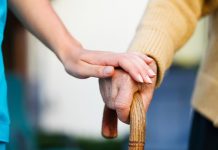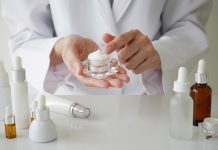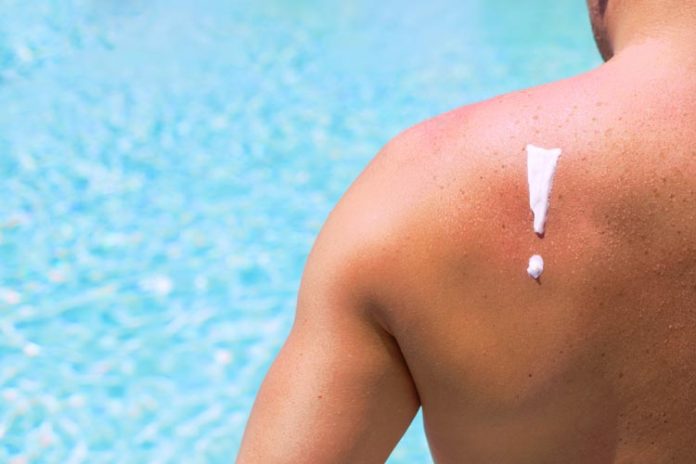Summer officially kicks off in a little over a month, meaning beach days, picnics in the park, and patio season are almost upon us. And while the reminder to wear sunscreen every day should be tattooed onto your brain at this point (seriously, wear sunscreen, even when it’s not sunny out), you may find yourself occasionally forgetting to slather on sunblock in the morning or dutifully reapply it a couple hours later. That is fine, and extremely relatable — as the great chanteuse Hannah Montana once said, “Everybody makes mistakes.” But even as you probably know that sunburns increase your risk for skin cancer, you probably don’t know exactly how that works — and why it’s important to avoid it as much as you can.
The sun’s ultraviolet radiation, or UV rays, are the culprit behind sunburns, damaging the skin and initiating mutations in skin cells, according to the University of Texas MD Anderson Cancer Center. “If the skin cells get more UV exposure than they can handle, the damage may be beyond repair, and the cells die off,” dermatologist Dr. Saira George told the MD Anderson Cancer Center. “Blood vessels dilate to increase blood flow and bring immune cells to the skin to help clean up the mess. All this causes the redness, swelling and inflammation we associate with a sunburn.”

While the sunburn will heal, the remaining mutated cells that survived might not be fully fixed, and these cells may eventually become cancerous in the long run, says the MD Anderson Cancer Center. “As the frequency of sunlight exposure increases, so, too, does the probability that some of that damage will escape repair,” dermatologist Dr. Jeffrey M. Sobell told Scientific American. “This mutated DNA may eventually lead to skin cancer.”
Accordingly, accumulating sunburns over your lifetime can increase your risk for different forms of skin cancer, writes Harvard Health Publishing, and people with lighter skin and eyes are more prone to these conditions due to having less melanin (a pigment that assists with protecting the skin from UV rays). Skin cancer is the most common form of cancer in the U.S., and the CDC estimates that roughly one in five Americans will develop skin cancer in their lifetime. Considering how sun damage is largely irreversible, your best bet is to minimize your risk for sunburn in the first place.

If you’re wondering about the effects of one bad burn in particular, no research has definitive answers just yet. But the University of Colorado Cancer Center suggests that, according to one study, experiencing five severe, “blistering” burns in childhood may increase the lifetime risk of developing melanoma, a form of skin cancer, by 80 percent.
For other types of skin cancer, accumulation of non-severe UV exposure over time plays a larger role. “Basal cell and squamous cell carcinomas are like pouring water into a pitcher until it eventually overflows,” Dr. Neil Box, PhD, an investigator at the University of Colorado Cancer Center, said. “Even as an adult, you can make the decision to protect yourself from the sun — to stop pouring UV radiation into that pitcher.”
The American Cancer Society recommends monitoring your skin for any new moles or sores that don’t heal, as these are potential signs of skin cancer. In addition to wearing sunscreen, sunglasses and hats are also great for helping shield your face and eyes from the sun. And if you’ve never thought twice about sunscreen, it’s never too late to start — it will only help minimize your sun damage-related health risks in the long run.
Source: Bustle



















































